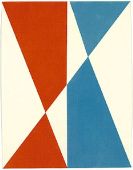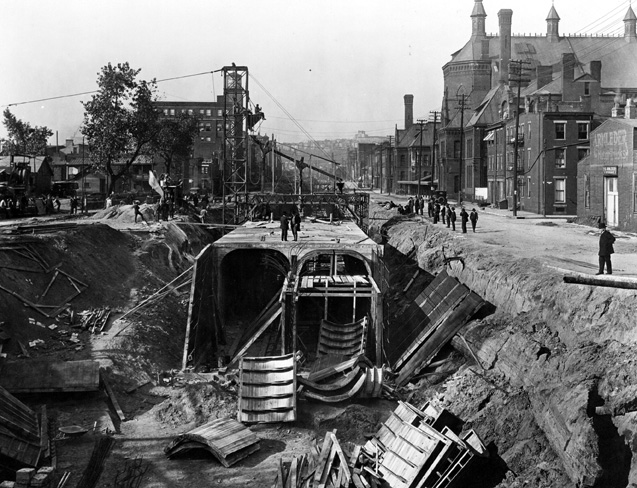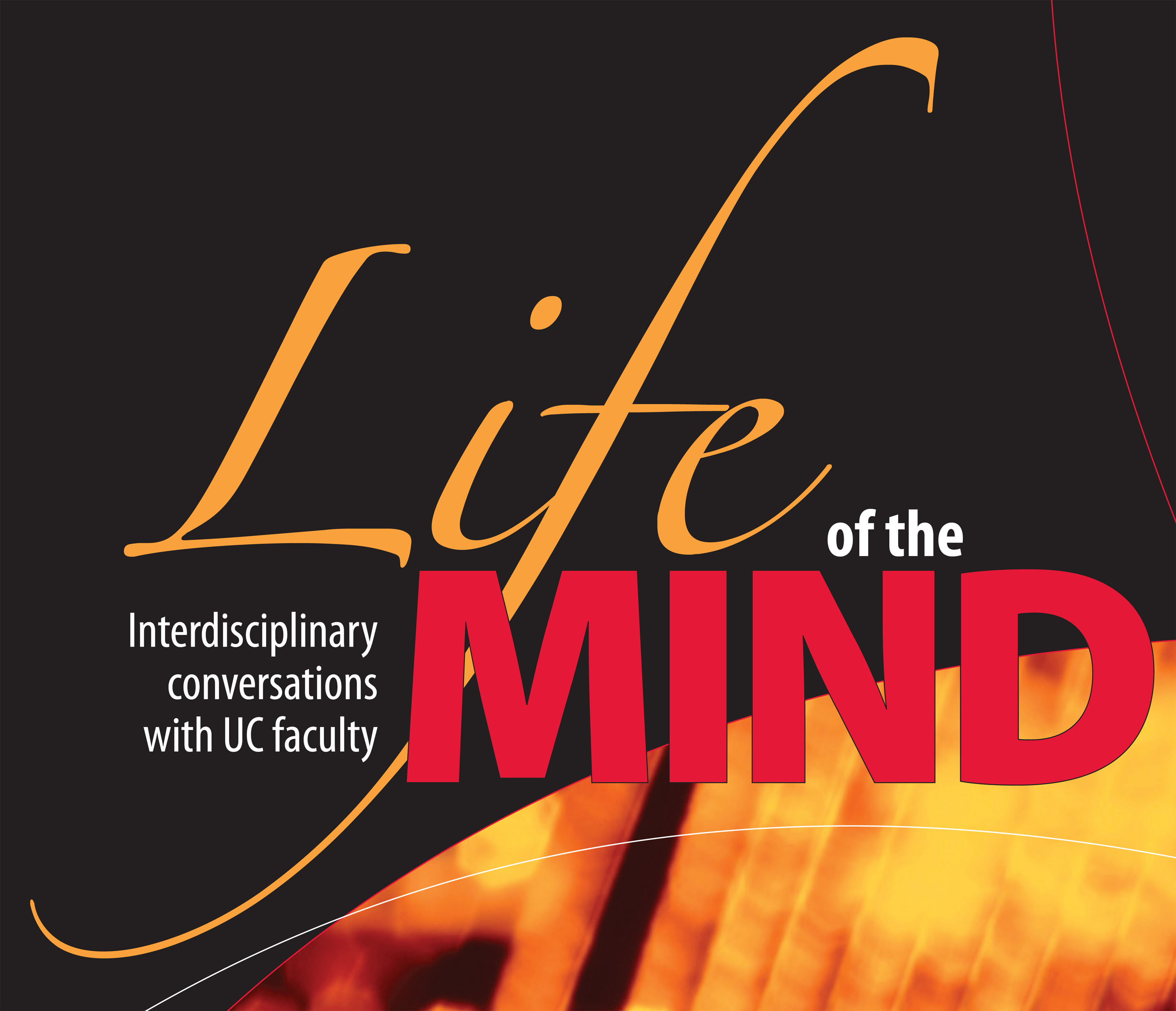 The second in the Life of the Mind lecture series on the theme “technology” is scheduled for Tuesday, May 10 at 3:30-5pm in the Russell C. Myers Alumni Center. Free and open to the UC community and public, Life of the Mind features interdisciplinary conversations with UC faculty around a one-word theme. Each quarter, there are two Life of the Mind sessions with three “thought provocateurs” contributing to each session. Each scholar provides a 15-minute talk followed by audience Q&A.
The second in the Life of the Mind lecture series on the theme “technology” is scheduled for Tuesday, May 10 at 3:30-5pm in the Russell C. Myers Alumni Center. Free and open to the UC community and public, Life of the Mind features interdisciplinary conversations with UC faculty around a one-word theme. Each quarter, there are two Life of the Mind sessions with three “thought provocateurs” contributing to each session. Each scholar provides a 15-minute talk followed by audience Q&A.
OhioLINK Technical Issues Resolved
OhioLINK has announced that www.ohiolink.edu and rave.ohiolink.edu links are working again.
New University Archives Exhibit Highlights Fraternity and Sorority Life
By: Janice Schulz
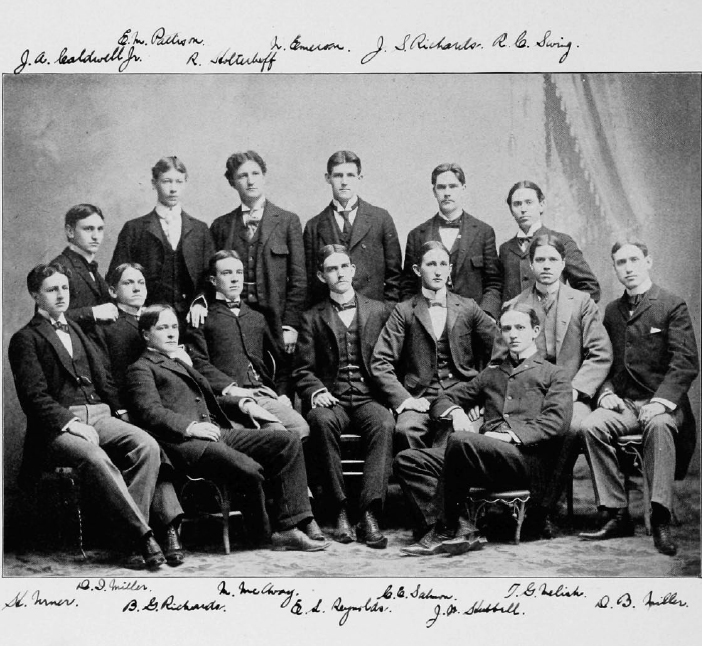 In a continuing effort to showcase student life at the University of Cincinnati, the Archives and Rare Books Library has created an exhibit documenting the history of fraternities and sororities from 1882 to today. Going Greek: Fraternity and Sorority Life at the University of Cincinnati offers a historical view into the development of the Greek system at UC and its growth (and growing pains) as it became a social vehicle at the University and then settled into the comfortable position it enjoys today.
In a continuing effort to showcase student life at the University of Cincinnati, the Archives and Rare Books Library has created an exhibit documenting the history of fraternities and sororities from 1882 to today. Going Greek: Fraternity and Sorority Life at the University of Cincinnati offers a historical view into the development of the Greek system at UC and its growth (and growing pains) as it became a social vehicle at the University and then settled into the comfortable position it enjoys today.
Started in 1882 with the establishment of the Sigma Chi fraternity, the Greek system grew steadily in the following decades to become the primary social force at UC in the 1940s, 1950s, and into the 1960s. Political and social unrest in the 1960s forced the Greeks to redefine themselves and their values, creating a system more like what we know now. Continue reading
T. M. Berry Project: Desegregating Cincinnati Pools or How Little Girls Made a Big Difference
By Laura Laugle
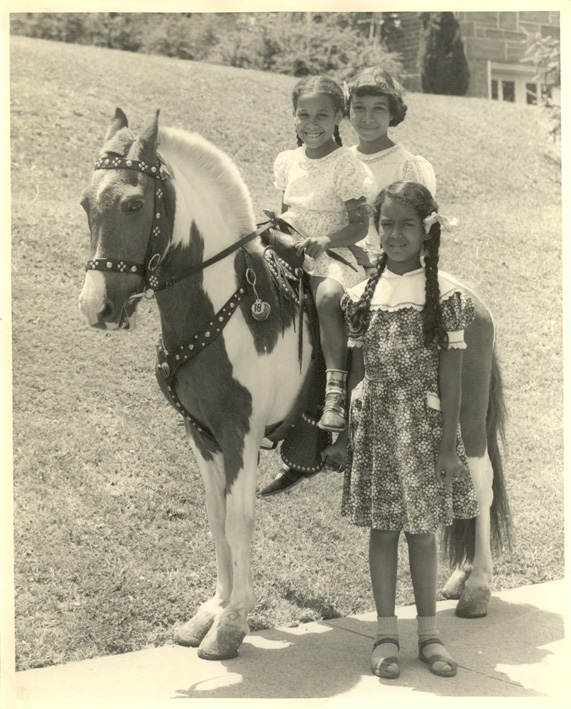 Is there anything better on a hot summer’s day than splashing around in the pool with friends? Maybe adding ice cream and a beach ball or two to the mix would improve the day but the pool would still be the main event. In the summer of 1950 Faith and Gail Berry, aged eleven and seven respectively, considered themselves to be extremely fortunate – they lived on Fairfax Avenue in Walnut Hills just a block away from Owl’s Nest pool. I can see the girls now – their summertime plans probably closely mirroring my own and those of my classmates forty-some-odd years later. Chores would be done as quickly as possible so that the cool, dewy mornings could be spent playing kickball in the backyard and roller skating in the street with other neighborhood children. After lunch there would be the mad dash to change into swimming gear followed by what should be a short walk to the municipal pool made longer by those inexorable needs to find and drag sticks along sidewalks and fences and to inspect the various creepy crawlies found along the way. Finally, the heat of the afternoon sun would be softened by diving, dunking, swimming and splashing in the cool water. So it should be for all children. But for the Berry girls there was a problem. Continue reading
Is there anything better on a hot summer’s day than splashing around in the pool with friends? Maybe adding ice cream and a beach ball or two to the mix would improve the day but the pool would still be the main event. In the summer of 1950 Faith and Gail Berry, aged eleven and seven respectively, considered themselves to be extremely fortunate – they lived on Fairfax Avenue in Walnut Hills just a block away from Owl’s Nest pool. I can see the girls now – their summertime plans probably closely mirroring my own and those of my classmates forty-some-odd years later. Chores would be done as quickly as possible so that the cool, dewy mornings could be spent playing kickball in the backyard and roller skating in the street with other neighborhood children. After lunch there would be the mad dash to change into swimming gear followed by what should be a short walk to the municipal pool made longer by those inexorable needs to find and drag sticks along sidewalks and fences and to inspect the various creepy crawlies found along the way. Finally, the heat of the afternoon sun would be softened by diving, dunking, swimming and splashing in the cool water. So it should be for all children. But for the Berry girls there was a problem. Continue reading
90 Day Trial for Scientific & Medical ART (SMART) Imagebase
This 90 day trial is for the Scientific & Medical ART (SMART) Imagebase; a collection of 20,000+ high quality illustrations and animations depicting anatomy, physiology, surgery, diseases, conditions, trauma, embryology, histology, and other health science topics.
SMART Imagebase users may download images for educational, non-commercial use in lectures, presentations, slide shows, web sites and more. Common types of visual presentations include PowerPoint™ shows, handouts, poster sessions, and interactive Flash animations.
Please let us know what you think; should the Health Sciences Library subscribe to the SMART Imagebase?
We appreciate your feedback. edith.starbuck@uc.edu or leslie.schick@uc.edu
90 Day Trial for Nursing Reference Center
The Health Sciences Library has a 90 day trial for Ebscohost’s Nursing Reference Center. Included in the Nursing Reference Center are sections where you can search or browse for diseases and conditions, skills & procedures, drug information, patient education, practice resources, or continuing education opportunities.
Please take a look and let us know if we should subscribe to this resource. Nursing Reference Center
Please provide feedback to: Edith Starbuck or Leslie Schick
Thank you!
Transcending the Desolate to the Sanguine: Reflections of East Germany through the Art of Hermann Glockner (1889-1987)
Come visit DAAP Student, Betty Hensellek’s, exhibition on the postwar work of East German artist Hermann Glöckner at the library of Design, Architecture, Art, and Planning (DAAP) at the University of Cincinnati. It is a modest show of an original print (1963), two original printed posters (1971 and 1987), two hand printed catalogues (1969 and 1976), and an out of print book (1983) that will be on display until June of 2011.
Living in Dresden and its suburbs for 98 years, Hermann Glöckner witnessed the construction, struggle, demise, and reconstruction of a single nation. The work displayed in this exhibition highlights his artist endeavors as a mature artist after previously experiencing two world wars, the chaotic Weimar Republic, the crimes of the Third Reich, and the division of Germany, which refashioned Dresden and Eastern Germany into the German Democratic Republic (Deutsche Demokratische Republik, DDR) as a communist Soviet Satellite State. Despite living through this turbulence and the shifting rigidity of censorship on culture in the DDR, Glöckner was able to find contentment and even optimism within the seemingly disconsolate political, economic, and social conditions.
Further reading:
1. Hermann Glöckner – Ein Patriarch der Moderne. Ed. by John Erpenbeck. Der Morgen. Berlin 1983
2. Die großen Dresdner. 26 Annäherungen. Ed. by Karin Nitzschke. Insel Verlag. Frankfurt am Main und Leipzig 1999
3. Günter Meissner: Allgemeines Künstlerlexikon: die bildenden Künstler aller Zeiten und Völker. K.G. Saur Verlag 1992. pp 198-201
Links:
1. Hermann Glöckner in the German National Library catalogue
50 Minutes-1 Book
By Kevin Grace
The final 50 Minutes – 1 Book lunchtime talk for the academic year will be held Thursday, May 26, in the Archives & Rare Books Library, in the Schott Seminar Room, 814 Blegen Library at 12:00 noon.
April’s presentation was by conservator and bookbinding designer Gabrielle Fox, who spoke about the artist’s binding she did for an edition of Bobbie Ann Mason’s With Jazz. For May, we will turn to a bit of local history about Cincinnati’s ill-fated subway project of the 1920s. Engineering snafus, property damage, political finagling, low financing, and a changing transportation culture in the United States all led to the project’s demise. This topic of special public transportation is particularly timely, given Cincinnati’s current controversial issue of a publically-funded streetcar network for the Over-the-Rhine historic district. So from the Miami-Erie Canal to subway tunnels to Central Parkway, May’s talk will focus on one way Cincinnatians considered moving about from street to street, neighborhood to neighborhood. Continue reading
UC Libraries Pay Tribute to UC Authors, Editors & Composers
 The 25th annual Authors, Editors and Composers reception and program was held Tuesday, April 12, in the Russell C. Myers Alumni Center. At the event, UC Libraries honored 250 faculty members and their 340 creative and scholarly works published in the year 2010. Participating faculty members represented every UC college plus the Career Development Center, the Division of Professional Practice, the Institute for Policy Research, the Office of Research, and the Libraries.
The 25th annual Authors, Editors and Composers reception and program was held Tuesday, April 12, in the Russell C. Myers Alumni Center. At the event, UC Libraries honored 250 faculty members and their 340 creative and scholarly works published in the year 2010. Participating faculty members represented every UC college plus the Career Development Center, the Division of Professional Practice, the Institute for Policy Research, the Office of Research, and the Libraries.
From the Dean
As you will see in this and earlier issues of Source, the Libraries are making significant headway in attracting grants to digitize our unique collections. This initiative makes what are often
fragile, one-of-a-kind publications, historical records, documents, photographs—and even a 16th century choir book—readily accessible for use by researchers around the world.
The Cincinnatian, the student yearbook dating back to 1894, offers fascinating insights about the university as well as Cincinnati history over the course of 12 decades. When the project to digitize the correspondence and photographs of Albert B. Sabin is completed in 2013, it will be possible to explore the work of this major figure in ways that greatly surpass current access to this collection.
The good news is that we have many more special collections in the queue that both warrant preservation in their original form yet are excellent candidates for this new world of digital
collections.

